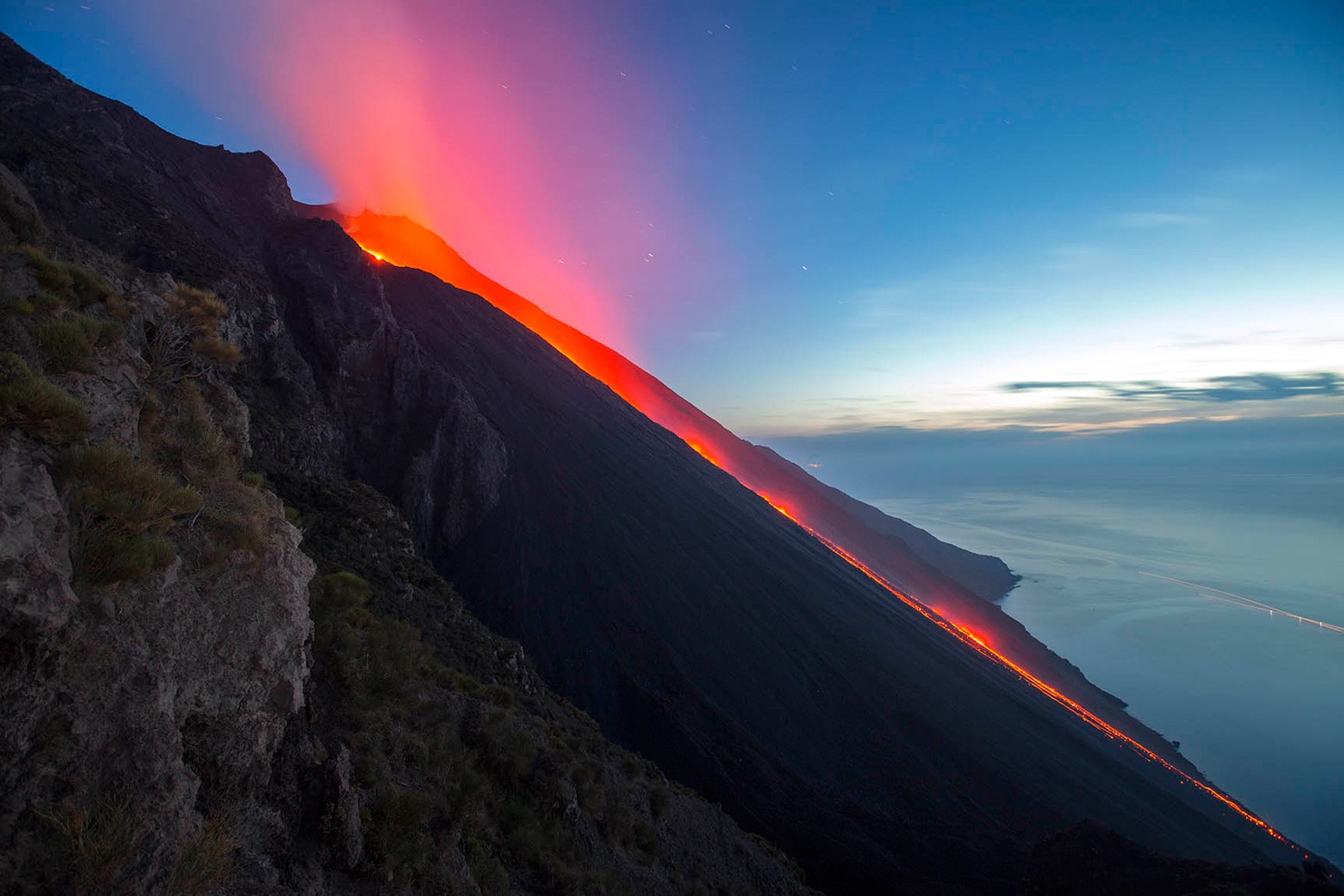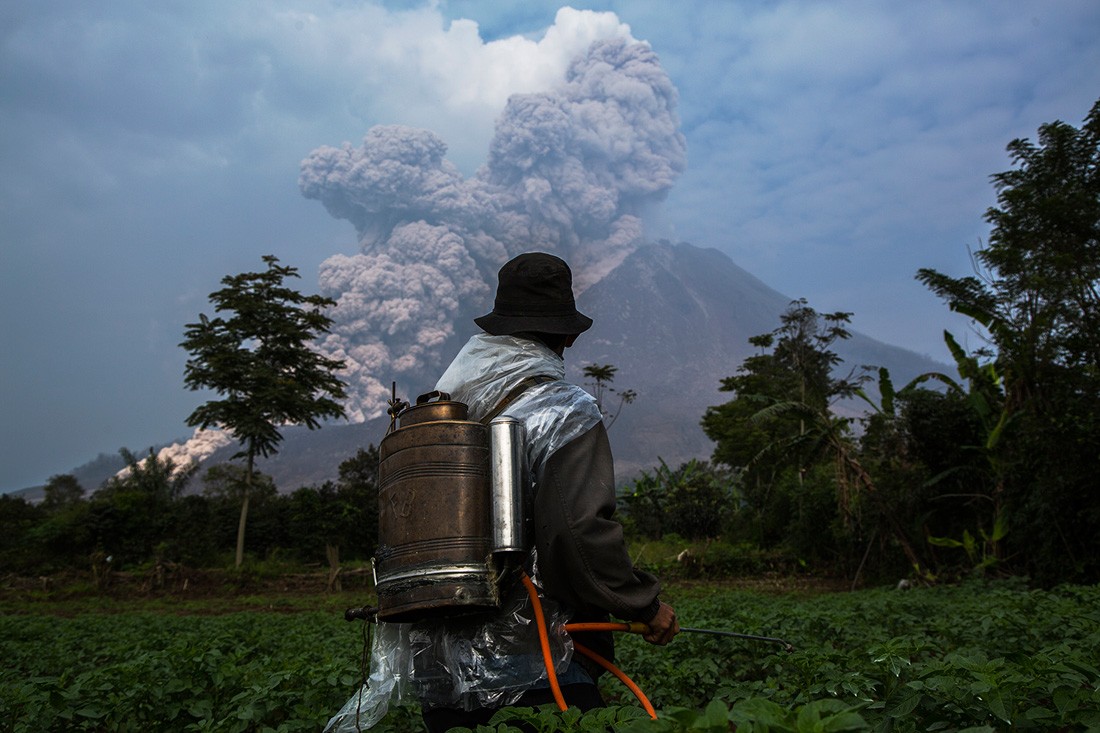
Throat of Fire: Cris Olivares’ Volcanoes
Cris Toala Olivares from Ecuador lives in the Netherlands, but works on documenting the stories of people who live near world’s ten largest volcanoes. He is currently documenting the eruption of the Cotopaxi volcano in Ecuador that came back to life after 158 years. Olivares told Bird in Flight about his search for a connection between nature and people, as well as how it feels to be in the jaws of the volcano.
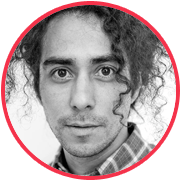
For my volcano project that I also plan to turn into a book I have already traveled to Sumatra, Cape Verde, Ecuador and Stromboli. Before shooting the volcano I first study its surface through Google Earth. There is a so called ‘point zero’ – a perspective from which you can see the shockwave from the volcano and the pyroclastic flow (Editor’s note: a fast moving current of hot gas, cinders and rock) traveling 700 km/h in your direction. From that point you do see the volcano but you don’t see the connection. The connection in my story is people that live with the volcanoes. I want to see the volcano from the perspective of those people and feel it the way they do.
{“img”: “/wp-content/uploads/2015/08/Cris-Olivares-Photos_01.jpg”}
{“img”: “/wp-content/uploads/2015/08/Cris-Olivares-Photos_02.jpg”}
{“img”: “/wp-content/uploads/2015/08/Cris-Olivares-Photos_05.jpg”}
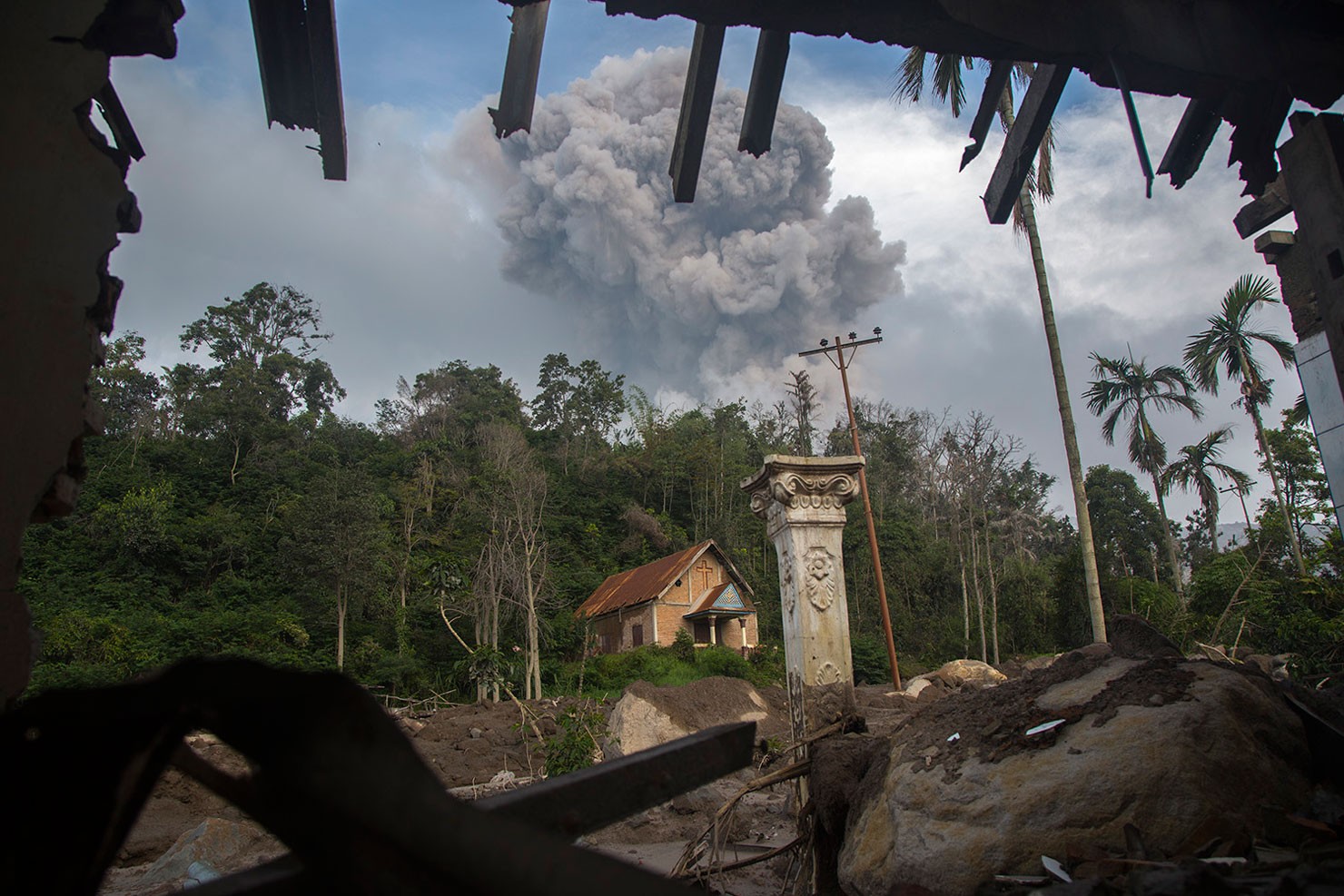
People that live around volcanoes do not just coexist with them but develop some kind of relationship with the volcanoes. I was fishing with people in Stromboli when they told me: “We catch only as much as we need and then we go home”. For me, this story is also about respect.
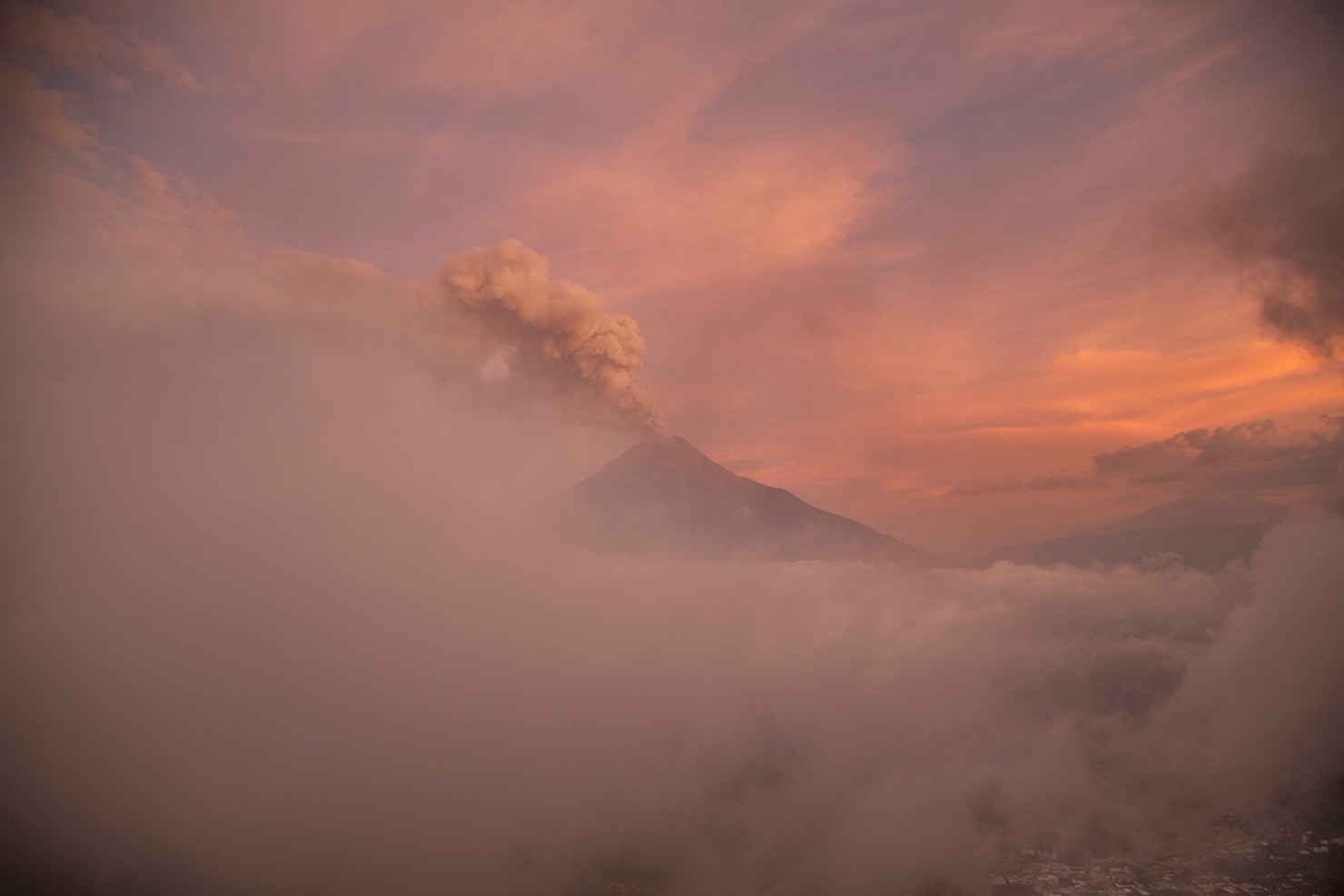
Every volcano has its own kind of character and power. In Stromboli people call the volcano ‘idu’, which is Strombolian for ‘him’. In Sumatra they also call the volcano ‘him’. In Ecuador it’s ‘tungurahua’ which in kichwa – a native South American language – means ‘Throat of Fire’. In Cape Verde they call the volcano ‘fogo’ – fire. Naming them differently, people also have absolutely different beliefs. I’m just trying to mix all those beliefs and stories together.
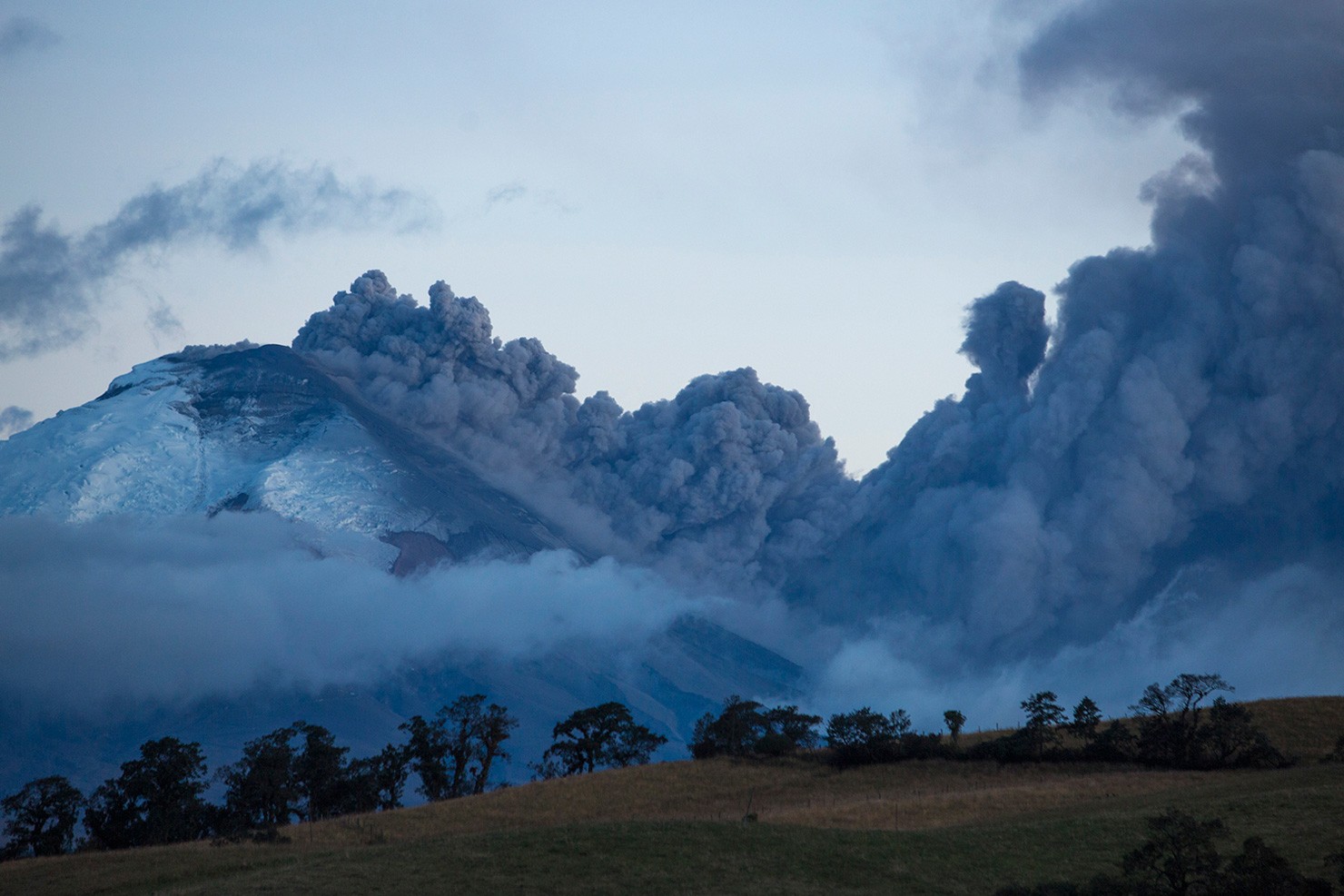
{“img”: “/wp-content/uploads/2015/08/Cris-Olivares-Photos_08.jpg”}
And because these people live really far away from other settlements and have never left their villages, the volcano became a kind of attraction for them. It’s like falling in love with someone – you want to see that person every day, you want to hear that voice every day. The same happens with volcanoes and people that live nearby. They say: “We’re born with lava and we die with lava”. People in Sumatra told me: “We are lice that live in dog’s fur, and a volcano is that dog. When the dog starts feeling the lice it simply shakes them off”.
{“img”: “/wp-content/uploads/2015/08/Cris-Olivares-Photos_09.jpg”}
{“img”: “/wp-content/uploads/2015/08/Cris-Olivares-Photos_07.jpg”}
There are people that don’t understand why you’re risking so much for the project. One very manly looking pilot in Sumatra refused to fly with me over Sinabung, because he was afraid. Last time I was in Stromboli I was climbing inside the crater and there were times when the pyroclastic flow was just behind my ass. But it’s showtime. When it’s showtime you have to do everything for your photo.
